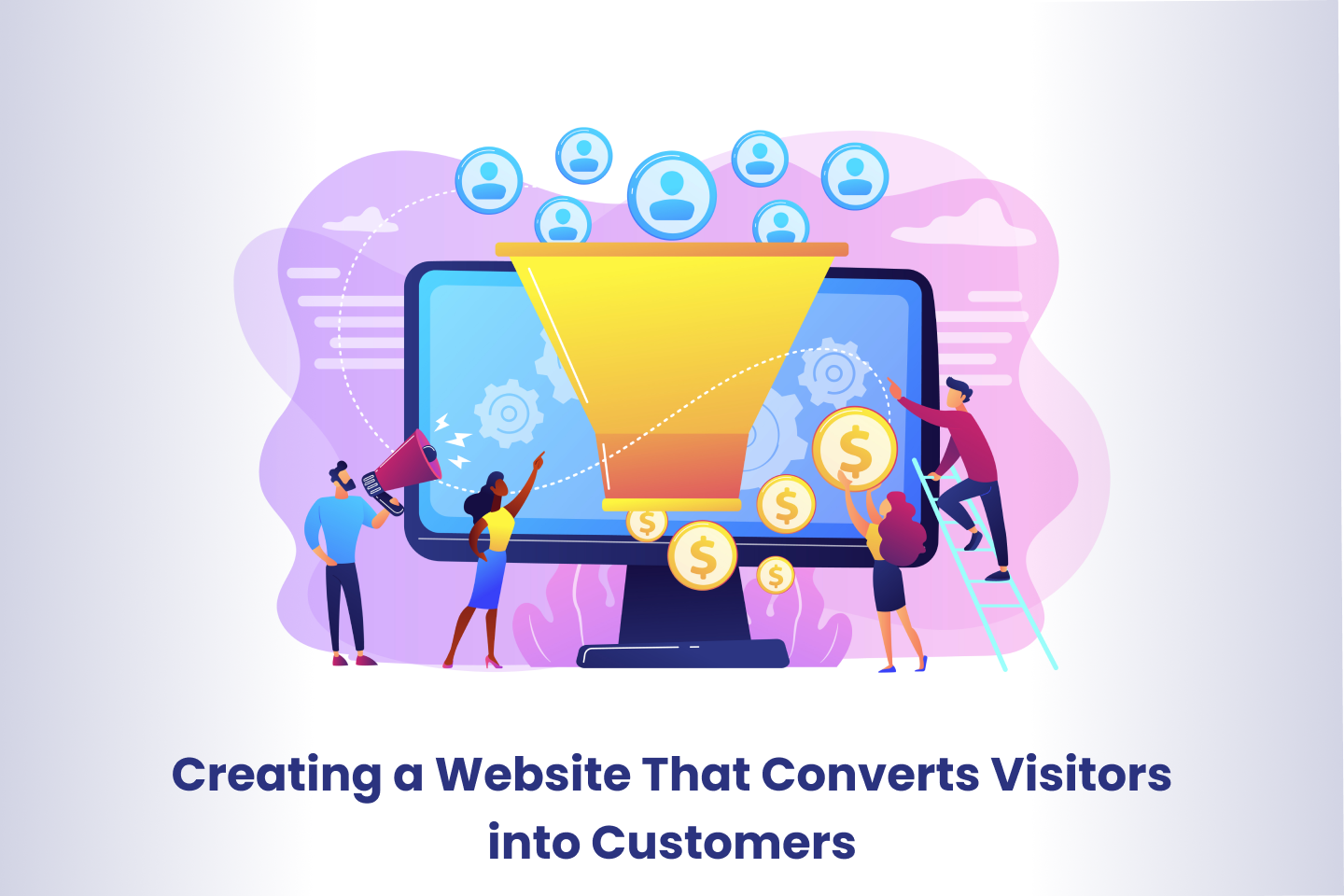Introduction:
As a business owner, having a website that converts visitors into customers is crucial for success in the online space. With the right strategies and tactics, you can create a WordPress website that not only looks great but also drives conversions. In this article, we’ll explore the key steps you need to take to build a WordPress website that converts visitors into customers.
1) Define Your Goals
The first step in building a website that converts visitors into customers is to define your goals. What actions do you want visitors to take when they land on your website? Whether it’s filling out a contact form, making a purchase, or signing up for a newsletter, your website design should be tailored towards encouraging these actions.
When defining your website goals, it’s important to consider your overall business objectives. For example, if your business relies on generating leads, your website should be designed to capture and convert leads effectively. This might include creating landing pages with lead forms, offering lead magnets such as ebooks or whitepapers, and using tools such as chatbots or webinars to engage with potential customers.
Section 2: Know Your Audience
To create a website that resonates with your target audience, you need to know them inside out. Conduct market research and analyze customer data to gain insights into what your audience wants and expects from your website.
To truly understand your target audience, it’s important to conduct thorough market research. This involves gathering data on your audience’s demographics, interests, behaviors, and pain points. There are several methods you can use to conduct market research, including surveys, interviews, focus groups, and online analytics tools.
Surveys and interviews can provide valuable insights into your audience’s needs and preferences. You can use tools such as Google Forms or SurveyMonkey to create surveys and send them to your email list or social media followers. Alternatively, you can conduct interviews with customers or prospects to get a more in-depth understanding of their motivations and pain points.
Section 3: Create Compelling Content
Content is a critical component of any website that converts visitors into customers. Create high-quality, engaging, and informative content that addresses your audience’s pain points and offers solutions to their problems. Use images and videos to break up the text and make your content more visually appealing.
here are some tips you can use to create the “create compelling content” section:
1. Use storytelling: People connect with stories, so use them to convey your message. Whether it’s a story about how your product helped a customer or a personal anecdote about your brand’s journey, stories can help build a connection with your audience and make your content more memorable.
2. Use visuals: Humans are highly visual creatures, so incorporating images, videos, and graphics can help make your content more engaging. Consider using infographics to convey complex information in a visual and easy-to-understand format or using product videos to showcase your offerings in action.
3. Use data: Data can help support your claims and make your content more credible. Use statistics and research to back up your arguments, and cite reputable sources to reinforce your message.
4. Write for your audience: Remember that your content is for your audience, not for you. Use language and terminology that your target audience will understand, and focus on addressing their pain points and concerns.
5. Use a conversational tone: Formal language and corporate-speak can be off-putting to readers. Instead, use a conversational tone to make your content more approachable and engaging.
6. Provide value: Your content should provide value to your audience. Whether it’s offering advice, solving a problem, or educating readers on a topic, your content should be useful and informative.
7. Use a call-to-action: Every piece of content should have a clear call-to-action (CTA) that guides readers towards your desired action, whether it’s signing up for a newsletter, filling out a lead form, or making a purchase. Make sure your CTA is clear and prominently displayed to encourage conversions.
Section 4: Design for Conversion
Design plays a crucial role in converting visitors into customers. Use a clean, modern design that is easy to navigate and visually appealing. Incorporate clear calls-to-action (CTAs) that encourage visitors to take action, such as filling out a form or making a purchase.
Once you have a clear understanding of your website goals and target audience, it’s time to start planning the design and content of your website. This involves creating a user-friendly layout, selecting an appropriate color scheme, and creating high-quality content that resonates with your audience. When it comes to website design, it’s important to keep things simple and intuitive. Visitors should be able to find what they are looking for easily and navigate your website without confusion. This might involve creating a clear navigation menu, using breadcrumbs to help visitors keep track of their location on your website, and using clear calls-to-action to guide visitors towards your desired actions.
Creating high-quality content is also crucial for engaging with your audience and driving conversions on your website. This might involve creating blog posts, product descriptions, videos, and other types of content that speak directly to your audience’s needs and pain points. By creating content that is both informative and engaging, you can build trust with your audience and position your brand as a thought leader in your industry.
By planning your website design and content with your target audience and business goals in mind, you can create a website that not only looks great but also drives results for your business.
Section 5: Optimize for Speed and Mobile
A fast-loading website is critical for ensuring a positive user experience and converting visitors into customers. Research shows that visitors will abandon a website if it takes more than three seconds to load, which can have a significant impact on your business’s bottom line. Therefore, optimizing your website for speed is essential.
One way to optimize your website for speed is by compressing images. Images can take up a significant amount of space on a website, which can slow down loading times. Compressing images reduces their file size without compromising their quality, allowing them to load faster on your website. Another way to optimize your website for speed is by using caching. Caching involves storing frequently accessed website data, such as images and code, on the visitor’s computer or mobile device. This allows the website to load faster on subsequent visits, as the visitor’s device doesn’t have to download the same data repeatedly. Minimizing code can also help to optimize your website for speed. The more code a website has, the longer it takes to load. By minimizing code, you can reduce the size of your website’s files and make it load faster a fast-loading website is essential for converting visitors into customers. By compressing images, using caching, minimizing code, and ensuring that your website is mobile-friendly and responsive, you can optimize your website for speed and provide a positive user experience for your visitors.
Section 6: Test and Iterate
Testing and iteration are crucial for building a website that converts visitors into customers. Use A/B testing to optimize your website’s design and content, and continually iterate based on user feedback.
A/B testing is a powerful tool for optimizing your website’s design and content. It involves creating two versions of a webpage, each with a slightly different design or content, and then testing them with a subset of your website visitors to see which version performs better. This allows you to identify the elements that are most effective in converting visitors into customers and make data-driven decisions to improve your website’s performance.
Continual iteration is also crucial for building a website that converts visitors into customers. By regularly collecting and analyzing user feedback, you can identify areas for improvement and make iterative changes to your website. This could involve tweaking your website’s design, content, or functionality based on user feedback, or testing out new ideas to see how they perform. By constantly iterating and improving your website, you can create a user experience that is tailored to your visitors’ needs and preferences, and maximize your chances of converting them into customers.
Conclusion:
By following these key steps, you can create a WordPress website that converts visitors into customers. By defining your goals, knowing your audience, creating compelling content, designing for conversion, optimizing for speed and mobile, and testing and iterating, you can build a website that drives conversions and ultimately helps your business grow.
Remember, creating a website that converts visitors into customers is an ongoing process. Continually analyze your website’s performance, make adjustments as needed, and stay up-to-date with the latest web design trends and best practices. By doing so, you can ensure that your website remains effective in driving conversions and helping your business succeed in the online space.







